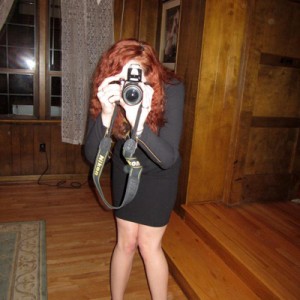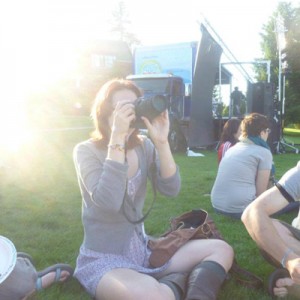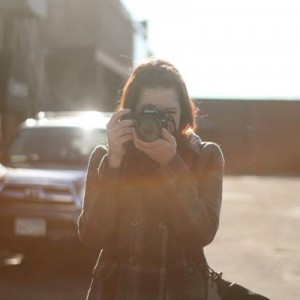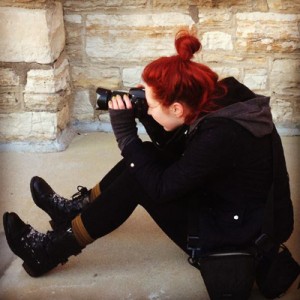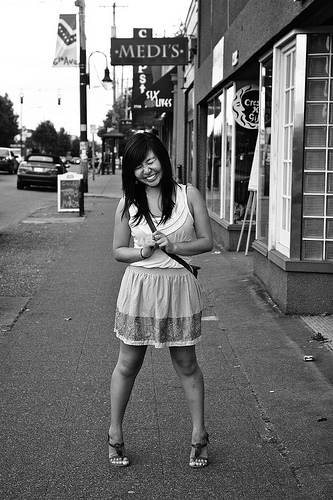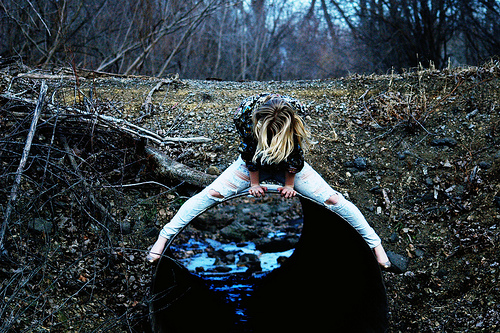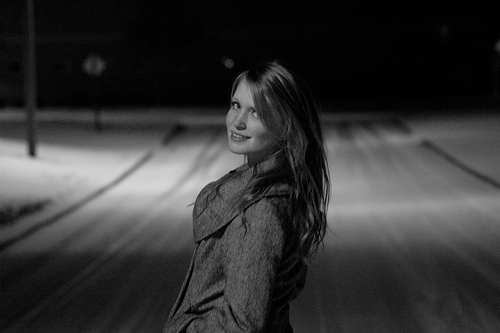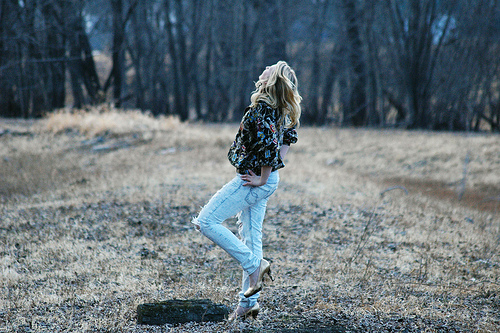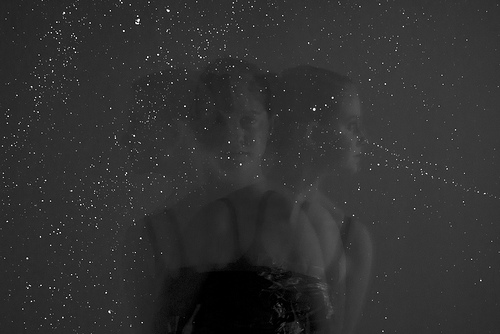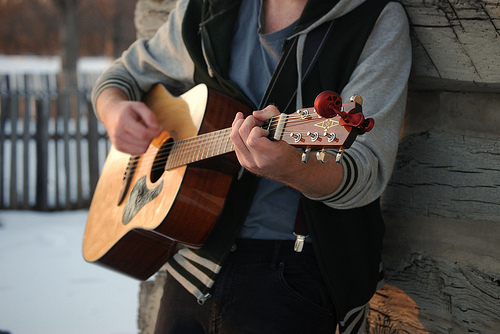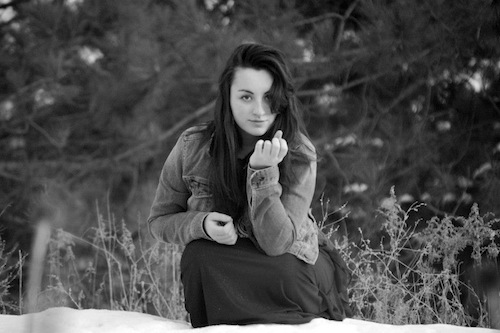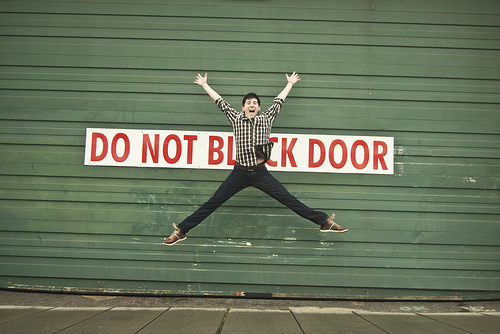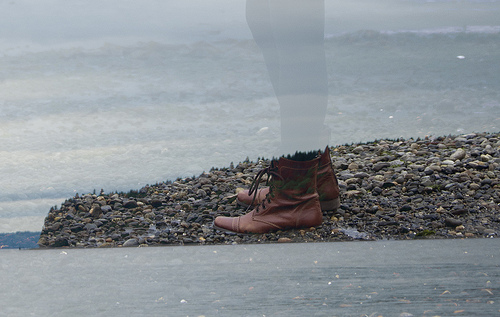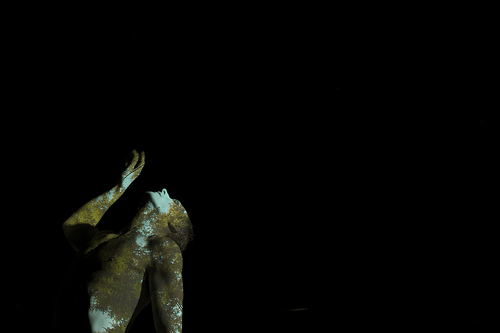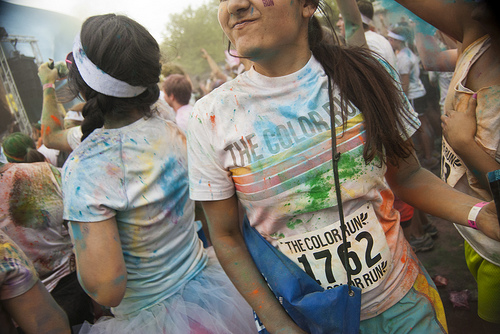Hi! I’m Emi. This is my first post on the voices page, so I figured I would start off with some introductions. So hello! This is me:
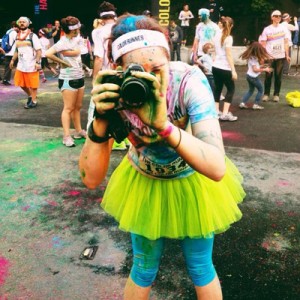
You may have noticed a camera in front of my face! Well, that leads me to the first thing you should know: I really like to take pictures. And by “I really like to take pictures,” I mean that my camera may as well be glued to my hand.
In fact, I like taking pictures so much, that I’m spending my summer studying photography! I’ve received a Summer Research Grant in the Arts, Humanities, and Social Sciences to explore how photographers demonstrate their artistic voice and involvement in their photography.
One way of explaining it is that a lot of artists have an aesthetic, technique, or theme that becomes their trademark, and I’m looking at how photographers create their personal trademark. The idea of an artist’s trademark (also referred to as the artist’s voice or the artist’s hand) is well established within the more traditional/analog (hands-on) media, including the four emphases that are available for studio art majors here at Puget Sound: printmaking, painting, sculpture, and ceramics. But because photography is relatively new within art (it didn’t have a strong presence in the art realm until the 1900’s), and because it’s primarily a mechanical process, there isn’t as thorough of an understanding for the way artists interact with the medium… which is why I’m exploring this subject!
I’ll be focusing my work primarily on portrait photography. Academically, portraiture has played such a large role in history (both art and regular history), but portraiture also plays a large role in contemporary culture: all you have to do is go to instagram or facebook (or any other social networking site) to see a portrait, whether it’s a mirror selfie—yes, those technically count as portraits, despite your personal feelings towards them—or professional portraits taken for a special occasion. We’re a culture that likes to see and record our own history, and one way of doing that is capturing our own image; whether in a candid sense or a carefully constructed portrayal. Portraiture has evolved from something that only the wealthiest could afford (back in the days when it involved sitting for a painter) to something anyone with an iphone can get involved with, and because of the increased accessibility we now have no shortage of portraits to look at.
My personal interest in portrait photography stems in part from how we portray ourselves, as well as our ability to carefully construct a fictional portrait, and in doing so create a storyline that accompanies it. How we interact with the world around us generally fascinate me, and that fascination has served as motivation for quite a bit of my work.
The final goal of my research is to take what I’ve learned from others and apply it to my own photography, creating a series of photographs that highlight my own identity within my photography. This concept is pretty open ended so far— first I have to figure out what it is that makes my own work distinctly mine, which is going to be a challenge (and will be what I spend most of my time on). To do so, I’ll be working in both film and digital photography, dabbling in styles ranging from photojournalistic to surreal, and exploring a variety of subject matter and inspirations to narrow down what it is that I’m interested in pursuing.
Of course, throughout my summer I’ll be updating here with what I’m up to, and there will be a lot of photographic evidence involved! I’m really excited about this opportunity, as this is a chance to really go in-depth and focus on specifically on what I’m interested in studying. It’s also an awesome opportunity because research is incredibly valuable in art— in fact, the process from conception to completed piece of work can be likened to the scientific method. You have an initial idea, like a hypothesis, and then you test it out by creating studies or mock-ups of your work, and then, depending on your results, you draw a conclusion, then you have the opportunity for adjustments to your idea, and you can repeat the process until you have a final piece of work that you’re pleased with. Artists are constantly taking notes on what is working for them and what isn’t, and we spend the majority of our time in this research stage because it’s such an integral part of our work.
To give you an idea of where I’m starting out, I’ll end the post with some photos of the work I’ve already done! I’ve done a mix commercial portraits as well as more creative work for my classes, but I’ll save the tale of my initial venture into photography for another post.
– Emi

